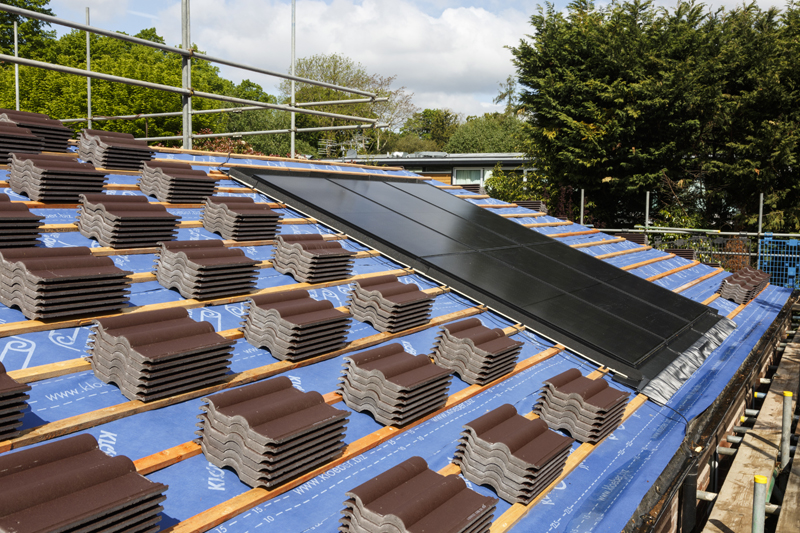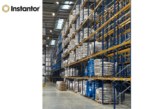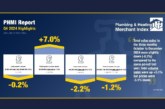
When it comes to making the move to zero carbon, Lorna Stork, ESG Director at SIG UK, explains how the supply chain has to work together if we are to have any impact on reducing carbon emissions.
Energy costs, unprecedented weather, and increasingly focused investment choices all highlight the urgent need to control carbon emissions. Responsible for as much 42% of all UK emissions according to figures from the UK Green Building Council, the built environment sector is right in the eye of the storm.
And whilst the UK government’s target of zero carbon by 2050 is ambitious, it can be achieved if industries work collectively.
Money talks and there is no doubt that the investment decisions being made by financial institutions are having a big impact. For instance, if the investor behind an office development scheme requires it to be zero carbon, or a national housebuilder sets an objective to be zero carbon by a specific date, then the supply chain has to fall in line.
This is increasingly important for product development. Over the last decade we have seen the emergence of increasingly efficient insulation, airtightness and triple glazing products as Building Regulations required ever higher energy performance from buildings in use.

We now know how to create buildings that use minimal or even no energy during their lifetime. However to be truly zero carbon, a building needs to have created no net carbon emissions during its construction — meaning that all the constituent products also must be zero carbon.
And this is where the supply chain comes in. Every manufacturer needs to look at the emissions it creates through its own operations such as the energy to run its factories and fuel to drive its vehicles. Then it needs to turn its attention to its own suppliers and factor in the carbon emissions associated with the raw materials it uses.
It’s a complex process and will take years to reach the zero carbon goal. We can see trials starting up for emerging technologies such as hydrogen-fueled factories, carbon capture, and carbon removal technologies plus a whole host of schemes to increase the use of reclaimed and recycled materials.
All of these solutions need to be explored and encouraged, and it’s a dynamic, fast-moving picture.
“For merchants and their customers, EPDs are particularly tricky as they will change rapidly — if a manufacturer switches to renewable energy, then its carbon emissions data will radically change overnight.”
The customers at the top of the supply chain need data to create their own carbon calculators. For product manufacturers, that data is currently provided in the form of an Environmental Product Declaration (EPD), and eventually, all products will need to have their own EPDs to provide independent verification of their carbon emissions claims.
For merchants and their customers this is another piece of certification that needs to be monitored and checked. EPDs are particularly tricky as they will change rapidly — if a manufacturer switches to renewable energy, then its carbon emissions data will radically change overnight.
Like any other responsible organisation, SIG is playing an active role in supporting the general move towards zero carbon and can do this in three ways. Firstly, with a focus on eliminating our own carbon emissions and with the vast majority of these arising from our transport, the race is on to source lower carbon fuels as an alternative to diesel and replace all our vehicles with low and ultimately zero carbon alternatives.
Secondly, we can help our customers navigate their way through the product information they need. This means providing a central database for all EPDs associated with the products we stock — making them easy to access. Our compliance team is also tasked with ensuring that the documentation we hold is up to date.
And thirdly we can play a role in helping innovative product development. Providing a distribution route for new products can massively accelerate their take-up.
 This is pattern of behaviour that is not unique to SIG but it needs to become second-nature and part of the core values of any organisation.
This is pattern of behaviour that is not unique to SIG but it needs to become second-nature and part of the core values of any organisation.
Today, the incentive to develop zero carbon products is being driven by voluntary commitments from the end customers, but regulation is bound to follow. France and Holland already have embodied carbon limits included in their Building Regulations and the UK will surely follow suit.
Looking at our product suppliers, I see great cause for optimism, with a huge commitment to finding solutions and huge investment in emerging technologies. Climate change is a fight that we can win — if every organisation plays its part.
Click the link for more information on SIG’s range of products and support services for merchants.
A version of this article appeared in the March edition of Professional Builders Merchant. Click or tap the link to read the full issue in digital format via the PBM website.









